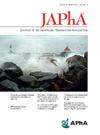集中监测分流预防减少受控物质差异。
IF 2.5
4区 医学
Q3 PHARMACOLOGY & PHARMACY
Journal of the American Pharmacists Association
Pub Date : 2025-05-24
DOI:10.1016/j.japh.2025.102426
引用次数: 0
摘要
背景:受控物质(CS)管理对于遵守法规、减轻转移和支持患者安全至关重要。综合管制物质转移预防计划(CSDPP)的发展是资源密集型的,可能需要数年才能成熟。目标:我们通过监测快速解决CS差异,作为全面CSDPP发展的第一步。实践描述:在实施集中团队之前,在IDN的12个急症护理设施中使用了两年的分流管理软件(DMS)。在此期间,在核对受控物质差异方面不一致的做法在2023年造成了28,000项未核对差异的积压。实践创新:作为开发CSDPP的第一步,我们创建了一个具有成本效益的、集中的多学科团队,以快速有效地监测受控物质的差异,并通过这种监测,加强法规遵从性,同时促进CS管理实践。评估方法:我们将DMS的早期数据与后期数据进行比较,以评估药物处置的表观损失差异和责任。以计算机为基础的培训提供了教育完成指标。药房负责人报告了2023年与2024年记录的接触者进行比较的监管机构接触者。结果:集中每日审核CS差异,在团队成立后3个月内100%审核所有差异受控物质交易。管制物质管理得到改善。一年后,表观损失差异减少了41%,药品处置的责任从62%提高到93%,监管报告减少了41%。结论:改进CSDPP的监测部分在六个月内实现了显着的效益,并在一年内扩展和改善:显着减少了表观损失差异,增强了法规合规性,改进了监管报告。这种集中监控的初始基础在建立CSDPP增长和扩展的结构的同时获得了关键的增量收益。本文章由计算机程序翻译,如有差异,请以英文原文为准。
Centralized monitoring for diversion prevention decreases controlled substance variances
Background
Controlled substance (CS) stewardship is essential for regulatory compliance, mitigating diversion, and supporting patient safety. The development of a comprehensive CS diversion prevention program (CSDPP) is resource intensive and may take years to mature.
Objective
We rapidly address CS variances through monitoring as an initial step toward comprehensive CSDPP development.
Practice description
Diversion management software (DMS) was used for 2 years across the twelve acute care facilities of the integrated delivery network before implementation of the centralized team. During this time, inconsistent practices in reconciling CS variances created a backlog of 28,000 unreconciled variances in 2023.
Practice innovation
We created a cost-efficient centralized multidisciplinary team as the first step of developing a CSDPP to rapidly and efficiently monitor CS variances and through that monitoring, strengthen regulatory compliance while promoting CS stewardship practices.
Evaluation methods
We compared early data from the DMS with later data to evaluate apparent loss variances and accountability of drug disposition. Computer-based training provided education completion metrics. Pharmacy leaders reported regulatory agency contacts for 2023 which was compared with recorded contacts in 2024.
Results
Centralized, daily review of CS variances resulted in 100% review of all variant CS transactions within 3 months of team creation. CS stewardship improved. After 1 year, apparent loss variances decreased by 41%, accountability for drug disposition improved from 62% to 93%, and regulatory reporting decreased 41%.
Conclusion
Improving the monitoring portion of a CSDPP realized significant benefits within 6 months which extended and improved over a year: a significant reduction in apparent loss variances, enhanced regulatory compliance, and improved regulatory reporting. This initial foundation of centralized monitoring captured critical incremental benefits while establishing a structure within which to grow and expand the CSDPP.
求助全文
通过发布文献求助,成功后即可免费获取论文全文。
去求助
来源期刊
CiteScore
3.30
自引率
14.30%
发文量
336
审稿时长
46 days
期刊介绍:
The Journal of the American Pharmacists Association is the official peer-reviewed journal of the American Pharmacists Association (APhA), providing information on pharmaceutical care, drug therapy, diseases and other health issues, trends in pharmacy practice and therapeutics, informed opinion, and original research. JAPhA publishes original research, reviews, experiences, and opinion articles that link science to contemporary pharmacy practice to improve patient care.

 求助内容:
求助内容: 应助结果提醒方式:
应助结果提醒方式:


